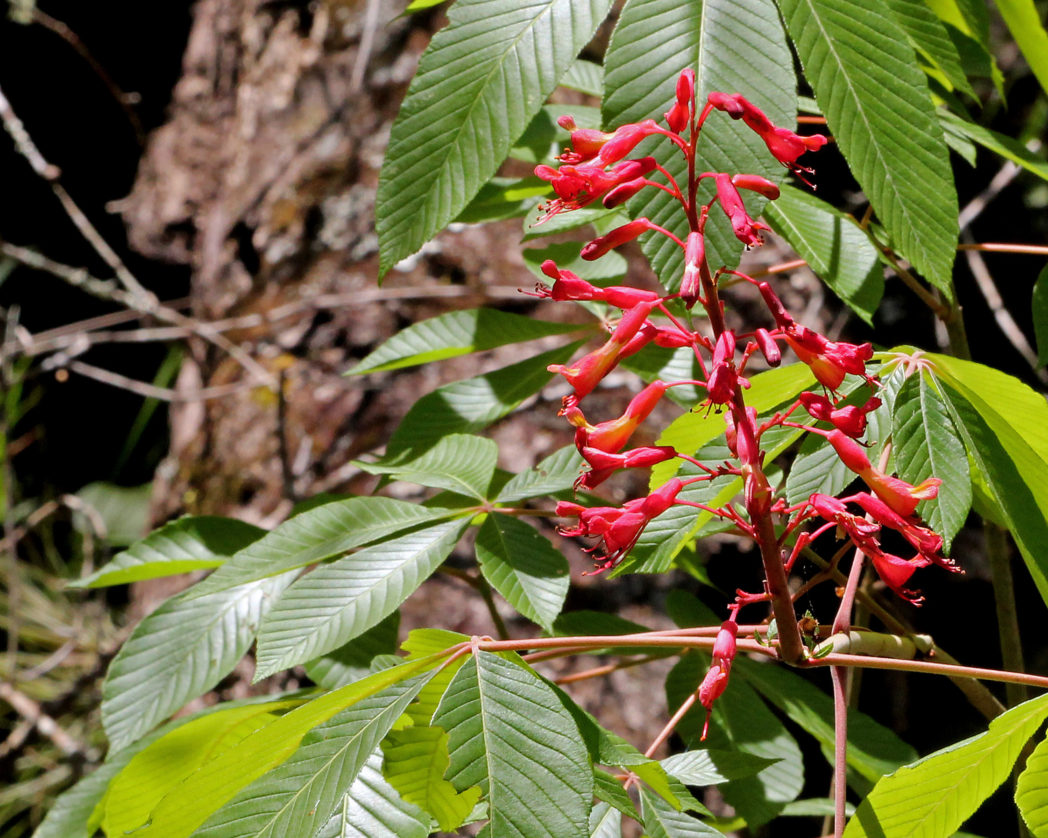Red buckeye
Pictured above: Red buckeye (Aesculus pavia) by Mary Keim. Click on terms for botanical definitions. View post as a PDF.
Red buckeye (Aesculus pavia) is a deciduous understory shrub or small tree that typically flowers in late winter through spring. It is one of the first of the red tubular flowering plants to bloom each year, and is an important food source for returning hummingbirds and butterflies. It occurs naturally in moist and calcareous hammocks, slope forests, and upland hardwood forests.
Red buckeye’s maroon to red, tubular flowers are born in showy, terminal clusters on red pedicels. Leaves are palmately compound with long leaf stalks. They are oppositely arranged. Leaflets are elliptic to obovate with finely serrated margins. The tree or shrub has an open, rounded crown. Its fruit, which appears in the fall, is a large, brown capsule that splits to reveal one to several seeds that look like chestnuts.
Family: Sapindaceae (Soapberry family)
Native range: Panhandle, north and central peninsula
To see where natural populations of red buckeye have been vouchered, visit florida.plantatlas.usf.edu.
Hardiness: 8A–9B
Soil: Rich, moist soil, but can tolerate drier soils
Exposure: Full sun to partial shade
Growth habit: 6–20’
Propagation: Seed
Garden tips: Red buckeye is fast-growing and usually flowers early in its life cycle. It can thrive in full sun, but may require additional irrigation. Seeds germinate quickly (sometimes even before they drop from the tree).
Caution: Both the leaves and the seeds contain saponins and are poisonous to humans and animals if ingested.
Red buckeye is often available at nurseries that specialize in native plants. Visit
PlantRealFlorida.org to find a native nursery on your area.

